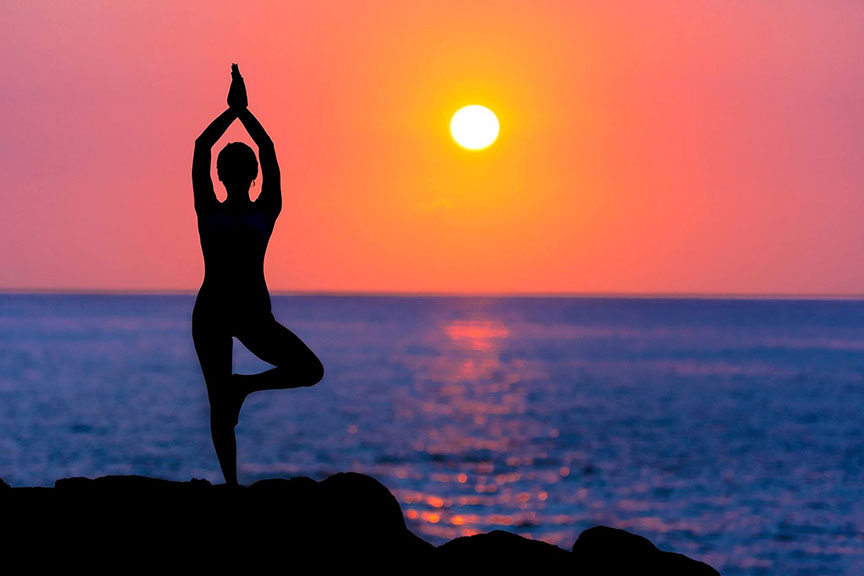History of Modern Yoga
by Jolene Cherry Yoga Teacher

For those of us who view yoga practice as an essential aspect of our being, or even the casual practitioners, you may be surprised to learn that the earliest mentions of yoga contrast significantly with Hatha Yoga, or what Western civilization views as modern yoga. Don’t let this revelation discourage you. Instead, view the evolution of yoga throughout the ages as a tree with many roots and branches spreading in various directions yet grounded in the same earth.
This article delves into the history of yoga and how in the last 200 years it has infused itself with the American fitness world. As you will come to learn, at one point in time, yoga either focused on the spirit or mind rather than incorporating techniques and poses that concurrently align our physical, mental, and spiritual energy.
Early Philosophy
Nascent yoga first appears in Northern India over 5,000 years ago in the sacred text Rig Veda. Additional Sanskrit texts, such as the Upanishads, view yoga as a tool to connect the physical body with the spirt in an attempt to access the divine. At this time, the concepts focus on philosophy, worship, and meditation rather than a physical practice.
Eight Limbs of Yoga
Around 150 BCE, the sage Patanjali outlined the Eight Limbs of Yoga in a collection of lifestyle truths known as the Yoga Sutras. Patanjali explores yoga as “the restraint of the modifications of the mind” through a variety of approaches such as breath control, meditation, and physical postures.
The third limb, asana, focuses on physical poses, though primarily from a seated position. It would not be until the 1800s when asana starts to take the initial shape of Ashtanga Vinyasa Yoga.
Asana Practice
During its key developmental years, modern yoga was influenced by a variety of factors, including European bodybuilding as well as the royal family of the Mysore Palace. A Mysore prince encouraged yoga practice, and under his rule, the Sritattvanidhi was written. The text includes over 122 yoga poses with instructions as well as illustrations and focuses primarily on asana practice. Asana refers to a posture or pose. Ashtanga Vinyasa Yoga teaches a sequence and series of asanas (poses) in a precise order and is a style of Hatha Yoga.
In the 1920s, yoga master Tirumalai Krishnamacharya developed a yoga style intended to improve strength and stamina. His philosophies and teaching were highly influential and produced three students that would help shape yoga into what it is today.
Yoga in America
Several yoga personalities can take credit for expanding yoga throughout the United States. In 1947, Indra Devi found success in Hollywood when she opened her yoga studio. The cultural revolution of the 1960s encouraged self-discovery and socially embraced alternative forms of exercise, further opening the door for yoga in the West.
B.K.S. Iyengar, a student of Krishnamacharya, capitalized on the fitness boom in the 1970s and removed some of the negative stigma associated with yoga practice. His publication Light on Yoga, a dense guide to 200+ poses with 600 photos, has become the quintessential manuscript for instructors and practitioners alike.
Yoga Today
Yoga has experienced enormous growth in America within the last two decades, especially as consumers adopt healthier habits. As of today, well, over 36 million Americans do yoga in some capacity. Styles cater to every personality, and studios are popping up all over communities to meet demand. Though yoga is grounded in tradition, it undoubtedly will continue to evolve in the years to come.
About Jolene Cherry: Jolene Cherry is the go-to yoga instructor and personal trainer in Portland, Oregon, for those looking to reach physical fitness and harmony in life. Combining her passion for travel, physical fitness, and meditation, she studied with renowned yoga instructors in Thailand as well as Hawaii. Jolene also offers guidance for healthy nutrition to strike a perfect balance in your life.
 >
>